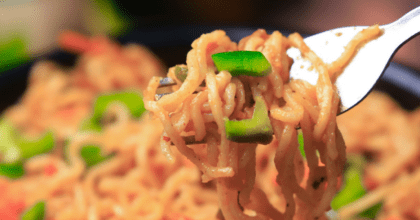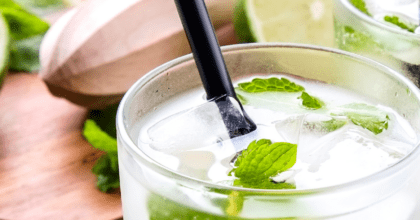Grape Expectations – just 26% of Brits think boxed wine is inferior to bottled
“Previously a no-go for the nation’s wine buffs, latest research from Mintel finds that screw tops, boxes and pouches are being seen as increasingly credible options among Britain’s wine users. Today, as many as four in ten (39%) wine users agree that wine in a box or a pouch is equally as good quality as bottled wine – indeed, just 26% of wine users think that boxed wine is inferior. Meanwhile, screw tops are seen as even less of an issue for wine lovers, with just 17% claiming not to trust””screw cap””quality wine.
Chris Wisson, Senior Drinks Analyst at Mintel, said:
“”Recent years have seen many wine drinkers reappraising their perceptions and use of wine in differing formats and packaging styles. Boxed wine has the added advantage of the wine keeping for a longer period of time than in a bottle, facilitating more flexible usage and encouraging moderate drinking. Reducing wastage, boxed wine provides an ideal solution in a market which is both environmentally and cost conscious.””
At the top level, all seems well in the UK wine market as, apart from in 2009, value sales have increased annually every year. Currently valued at £10.4 billion in 2011, the year ahead is estimated to see a continuation of this trend, with sales increasing by 2.4% to reach £10.6 billion in 2012. However, this market is not as healthy as it may initially seem, as volume sales have fallen from 1.26 billion litres in 2007 to 1.14 billion litres in just five years. Many users have already traded out of buying wine in recent years, driven away from the market by continued pressures on household budgets, with Mintel’s research showing that two in five (39%) wine buyers are now reassessing their purchase of wine.
Reflecting the cost pressures at play in the wine market, the relationship between wine buyers and brands has shifted. While the leading brands in the wine market can take comfort from the fact that they command a high level of trust, with almost three quarters of wine buyers (73%) trusting them to provide a consistently good product, there is a notable dark cloud on the horizon for as almost two thirds (63%) of wine buyers claim that they would switch from their favourite brand if another was on promotion.
“With many brands now moving away from unsustainable promotion-heavy models, volume sales look set to continue sliding in the years to come. However, many consumers are likely to be reluctant to stop buying wine altogether and depending on the level of inflation, the price rises may be higher than the fall in volume, with potential for further value growth. Growing segments such as boxed and low-alcohol wine may help to stimulate some growth and represent a cost-effective means of keeping wine drinkers engaged with the market.”Chris continues.
While price and brand name are predictably high up in wine buyers’ decision-making process, the fact that a majority of 57% list the grape type as one of their main choice factors is a surprising finding, well ahead of the 38% who identify country of origin as a main driver when buying wine. This suggests that many wine drinkers are shopping for wine according to the grape types which they know they like, somewhat circumnavigating in-store layouts based on country of origin.
However, rosé wine has made great strides over the past decade and is now a mainstream segment of the wine market, drunk by 43% of adults. Part of its success can be attributed to the fact that it has broadened its appeal and become a more acceptable drink for all ages but, more importantly, both men and women alike. In 2012, six in ten (60%) wine buyers think that it is a drink which is equally suitable for both genders, with just 15% disagreeing.
Although accounting for a fraction of the total market value, English wines have seen significant growth in recent years with sales estimated to be up to £25 million, an increase of over 50% in value and 25% in volume on the previous year. Today, there is a high level of enthusiasm among wine buyers to try wines from many different countries (72%), and English wine has been one of the main beneficiaries of this open-mindedness, with 56% of consumers more open to trying English wine than in the past. Improving quality perception has played a role in this, as one in two (52%) agree that English wines have improved in quality.
“English wine looks well placed to continue growing in the coming years, with increasing numbers of vineyard plantings and bottles produced. While growth is rapid, the English wine industry faces some key obstacles including limited mainstream availability.”Chris continues.
Indeed, price is also proving an obstacle for some wine lovers. While half of wine buyers (47%) think that it is important to buy English wines to support local producers, only 15% are prepared to pay a premium to do so. Other issues include confusion between the significantly different English and British wine markets – over a third of wine drinkers (35%) think that British and English wines are the same.
Despite the difficulties and potential extra costs of production, lower-alcohol wines are one of the few segments of the wine market showing robust year-on-year growth, with value sales increasing by 40% to around £23 million over 2011/12. The market has benefited from lower duty on wines with an ABV of 5.5% or less and a growing emphasis on healthy lifestyles and lower alcohol consumption, although still just one in five wine buyers (19%) claim to be interested in lower-alcohol wines. Taste presents a notable barrier for low alcohol wines, with a third (32%) of wine buyers preferring the taste of normal-strength wines. However, on a more positive note, only 27% of wine buyers would expect lower-alcohol wines to taste inferior, suggesting that the majority do not hold such prejudiced views.
“Many wine drinkers are becoming increasingly price-sensitive and unwilling to pay more for their wine. The opportunity for wines with an ABV of 5.5% or less is that some of the tax savings could be passed onto consumers, encouraging less affluent users in particular to remain engaged with the market. However, the issue for producers of these lower-alcohol wines is that they are often more difficult and expensive to produce than standard-ABV wines and operators should continue to focus on improving the efficiency of their manufacturing process to be able to compete with standard wines on price profitabl””Chris concludes.”
-
Mintel StoreGet smart fast with our exclusive market research reports, delivering the latest data, innovation, trends and strategic recommendations....View reports
-
Mintel LeapMintel Leap is a revolutionary new AI-powered platform that will transform your research process....Book a demo







































